1 Introduction
An important development direction of aircraft airborne systems is electrodynamics, that is, the use of multi-electric systems and all-electric systems. At the same time, the electrodynamics of the propulsion system/powerplant (ie, the electric propulsion system) has also made significant progress, and has been successfully used in small propeller general-purpose aircraft/helicopters and drones to develop new electric aircraft (aircraft). Electric aircraft has many advantages such as energy saving, high efficiency, simple structure, etc., which will promote the revolutionary development of general aircraft/UAV. After decades of development of electric propulsion systems and electric aircraft, technical challenges and difficult problems are gradually being solved, and important progress has been made in product development.
From the development point of view, electric aircraft and electric vehicles have a great correlation, are to achieve energy-saving and environmental protection goals, the two technologies have certain compatibility, some of the electric vehicle technology can be transplanted and borrowed by electric aircraft. The challenges and difficulties faced by the two are similar. In contrast, electric planes are more difficult and slower to develop. Both electric vehicles and electric planes are in the stage of exploration and development, and there are still unknowns in their success.
The electric power of transportation vehicles is a major trend, enabling transportation vehicles to achieve energy-saving, environmentally-friendly and efficient technological changes. It is believed that the continuous efforts of mankind will ultimately lead to success. A manned electric (universal) aircraft is expected to be connected with electric vehicles as a highly efficient and environmentally friendly private aircraft, which is widely used to create an electric aviation aviation era. This article focuses on and analyzes the technical development of manned electric aircraft.
2 Electric aircraft brief development history
For more than half a century, aircraft electric power technology has gradually matured, and various types of electric aircraft (aircraft) have appeared one after another. The solar electric aircraft first succeeded, and the lithium battery and fuel cell electric (universal) aircraft have developed rapidly in the last decade.
In the mid-1970s, solar-powered electric drones were the first to succeed, and a number of manned and unmanned solar-powered aircraft were successfully developed since the late 1970s. At present, the manned solar-powered aircraft has broken through the continuous flight technology of day and night, and the practicality has also been significantly improved. The use of unmanned solar aircraft has been continuously expanded, and the life time and flight altitude record have been continuously created. The flight altitude has reached the stratosphere and the battery life has reached ten days. And impact on the goals of months and years.
For more than a decade since the late 1990s, small (manned) lithium batteries and fuel cell electric (universal) aircraft have developed rapidly due to advances in high specific energy/energy density lithium batteries and fuel cell technologies and related technologies. Lithium battery electric general-purpose aircraft technology is gradually becoming mature, and it is possible to achieve mass production and mass application in the near future. The fuel cell electric general-purpose aircraft is still in the technical research and testing stage, and the next step will be to develop a fuel cell electric aircraft with certain practicability.
In addition, since the current pure electric power system is difficult to provide large output power and electric energy, an electric power-internal combustion engine hybrid system has been developed for this purpose, and the development of the hybrid aircraft is also in progress.
In short, the development of electric aircraft is making breakthrough results. Although it still faces many difficulties and challenges, its prospects are bright. It is foreseeable that this century may welcome the power aviation era!
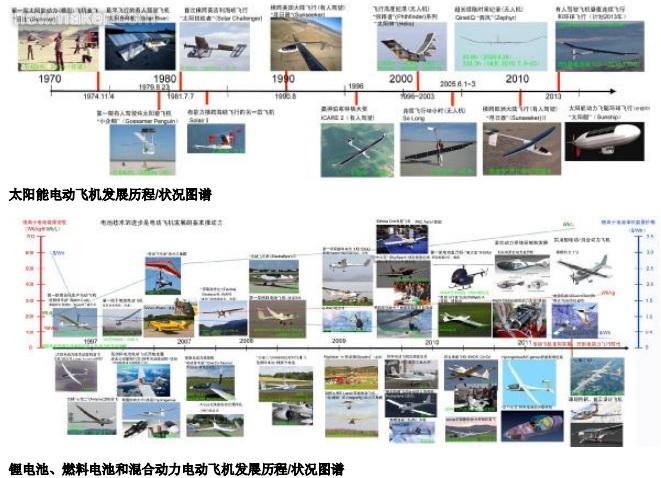
3 electric propulsion system
The electric propulsion system is the basis of electric aircraft and is currently only suitable for small propeller general purpose aircraft/helicopters and drones. Its components include: electrical energy storage/generation systems (solar cells, high specific energy batteries, fuel cells and fuel and fuel storage). Systems, etc., motors, control electronics, propellers, etc., some of which draw on and portray the technical achievements of electric vehicles.
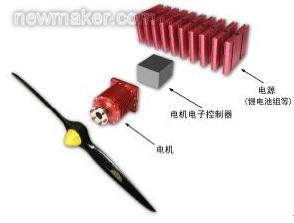
The composition of a typical electric propulsion system
Batteries and motors are the two key technologies for electric power propulsion systems. Similar to electric vehicles, batteries (lithium batteries), fuel cells (and hydrogen fuel storage systems) and motors are technical bottlenecks that constrain their development. Due to the low performance of the battery (lithium battery) and fuel cell, the current electric power propulsion system can only make the aircraft perform a short test and verification flight under the condition of reducing the effective loading, and there is still a large distance from the utility.
The electric propulsion system technology can also be used for APUs, multi-electric systems and all-electric systems of large aircraft, and may meet the requirements of large-scale general aircraft in the future.
3.1 Key Technologies - Battery and Motor
The basic requirements of aircraft solar cells: high performance, light weight, high efficiency; moderate price, lower than spacecraft solar cells; good mechanical properties, good flexibility to fit the surface of the body, and can withstand a certain load , to meet the use of harsh environmental conditions. At present, the aircraft mainly uses ultra-thin film package structure monocrystalline silicon solar cells. In recent years, the efficiency has increased to more than 20%, and the improvement is more difficult because its theoretical limit value is about 25~30%. The development direction of solar cells is to further improve performance and reduce costs.
Lithium (ion) batteries and fuel cells have high specific energy characteristics (electric energy stored per unit mass in units of Wh/kg or kWh/kg) / high energy density (electric energy stored per unit volume, in units of Wh/L or kWh/L) ),as the picture shows.

Comparison of various types of batteries
lithium battery
Lithium battery is a new type of high-energy battery that appeared in the early 90s. Its main advantages are: high specific energy/energy density, green environmental protection/no pollution, long service life, high rated voltage, no memory effect, low self-discharge rate and high cycle life. High and low temperature adaptability, fast charging and so on.
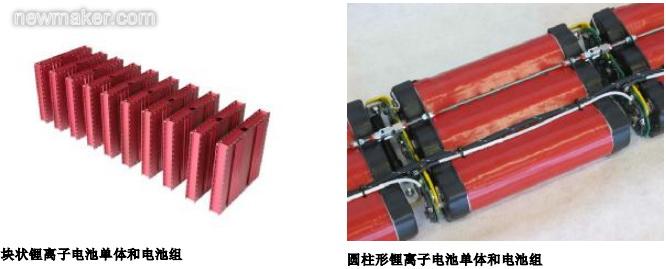
At present, the specific energy of lithium batteries can reach about 150~250Wh/kg, which can only meet the minimum requirements of electric power propulsion systems. Although the specific energy and energy density of lithium batteries have increased significantly over the past 20 years, to make the electric power propulsion system nearly practical, the specific energy and energy density need to be doubled on the current basis.

Lithium battery specific energy / energy density increase
At present, scientists are working to improve the performance of lithium batteries. A nano-Si wire electrode technology is expected to increase the storage capacity of lithium batteries by ten times.
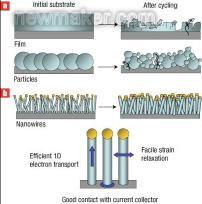
New silicon nanowire battery technology is expected to increase the specific energy of lithium batteries by ten times
The fuel cell
A fuel cell is an electrochemical device that directly converts chemical energy into electrical energy through an electrochemical reaction between a fuel and an oxidant. It has high efficiency and is environmentally friendly (no pollution or low pollution, low noise and vibration levels). High energy and other advantages. Other advantages: maximum efficiency under both partial load and full power conditions, and fast load following performance; modular structure, easy mass production, easy to rebuild, high safety; can use a variety of hydrogen-based fuels, from pure Hydrogen to multiple hydrocarbon fuels; components of the fuel cell stack can be recycled.
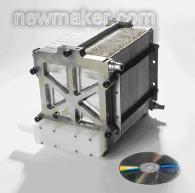
Fuel cell stack appearance
The fuel cell electric power propulsion system mainly uses a proton exchange membrane fuel cell (PEMFC) and a solid oxide fuel cell (SOFC). The working substances of PEM fuel cells are hydrogen and oxygen (from air). When direct and non-combustion electrochemical reactions occur, they output electrical energy and generate certain thermal energy. The only product of chemical reaction is water, which does not produce combustion products such as carbon oxides. And the vibration and noise levels are very low, so the environmental performance is very good. PEM fuel cells generally require atmospheric operation. The use of a supercharger on the aircraft (because the atmospheric pressure drops with height), the use of a supercharger for aircraft with lower cruising altitudes can also improve fuel cell performance. Fuel cell stacks are environmentally demanding and require a complex cooling system and anti-ionization system.
The main problem of fuel cells is that the performance needs to be improved, the system structure is complex, the technology maturity is low, and the cost is high.
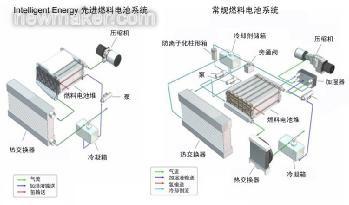
Fuel cell stack system

Composition of fuel cell stack
Motor
The motor converts electrical energy into mechanical energy, which drives the propeller to rotate and propels the aircraft. The motor is based on the electromagnetic mechanism and has many advantages over the piston engine, including: high efficiency, energy saving and environmental protection, simple structure, light weight, high reliability, good maintainability, low price, good versatility, output torque characteristics and high characteristics. Good, no power pulsation, suitable speed, easy to operate, good design, etc. Electric motor requirements are: small size, light weight, high efficiency, low power consumption, low speed, good handling and high reliability.
(Rare Earth) Permanent Magnet Brushless DC Motors, AC Synchronous Motors, and Switched Reluctance Motors (SRM) can better meet the above requirements and are widely used in electric aircraft. The advantages of both DC and AC motors are available. Electric aircraft are DC power systems. The use of DC motor circuit systems is relatively simple, but the shortcomings of DC power transmission loss and skin effect, DC motor power to weight ratio is low, control is complex, and the price is more expensive. AC motors have the advantages of simple control, low price, and self-cooling effect, but need to increase DC-AC inverters, and the circuit is more complicated. Pulse width modulation (PWM) technology can better solve the control problem of DC motor, which is beneficial to its use.
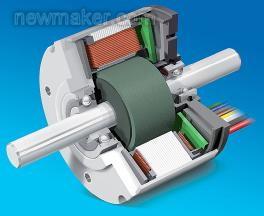
Typical motor structure sectional view (simplified structure, the number of parts is about tens of items)
At present, the specific power of permanent magnet DC motors can reach 2~3hp/kg (the piston engine is about 1.5~2hp/kg), and it may increase to 6~10hp/kg in the future. The main problem with existing motors is that performance and reliability need to be improved to meet high power requirements (above 100 hp or more).
3.2 Three electric propulsion systems
According to the electric energy storage/generation system, the electric propulsion system can be divided into three different systems of solar energy, fuel cell and battery, and the battery is also installed in the first two systems. At present, the battery electric propulsion system uses lithium batteries, so this article refers to them as lithium battery electric propulsion systems.
In addition to the pure electric propulsion system, there is an electric power-internal combustion engine hybrid propulsion system.
Solar electric propulsion system
The composition of the solar electric propulsion system is shown in the figure. The solar array converts solar energy into electrical energy output, and optimizes the efficiency of each solar cell through a maximum power point tracker (MPPT) electronic device. The high-voltage direct current output of the tandem solar cell is sent to the bus bar, and the bus bar is subjected to power control. The device supplies power to the motor-propeller system. In the case of an AC motor, the DC power needs to be modulated by a DC-AC converter. The ground power socket and battery (lithium battery) are also connected to the circuit.
The battery (lithium battery) is used in combination with the solar battery. The functions are as follows: 1) Fully charged before take-off, providing additional electric power during the take-off/climb phase of the aircraft requiring high power; 2) Charging during flight, storing surplus energy of electric energy, Flying at night in the aircraft; 3) as an emergency power source.

Lithium battery electric propulsion system
The composition of the lithium battery electric power propulsion system is shown in the following figure. The working process of the system: the lithium (ion) battery pack outputs DC power, the DC-DC converter modulates the voltage and current, and then supplies it to the DC-AC converter (inverter) ), and then to the AC motor; or to the pulse width modulator, and then to the DC motor. The electric motor drives the propeller to rotate and propels the aircraft. The entire process is controlled by the aircraft management unit (or energy management and distribution system) / cockpit control interface.
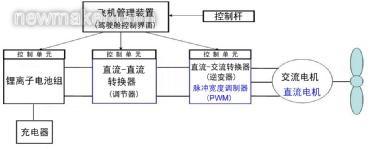
Lithium battery electric power propulsion system block diagram
Fuel cell electric propulsion system
The composition of the fuel cell electric power propulsion system is shown in the following figure. The working process of the system: the fuel cell stack converts the hydrogen in the high-pressure hydrogen storage tank and the oxygen in the (inverter) air into a direct current output, and the DC-DC converter voltage It is modulated with current and then sent to a DC-AC converter (inverter) and then to an AC motor; or to a pulse width modulator for delivery to a DC motor. The electric motor drives the propeller to rotate and propels the aircraft. The entire process is controlled by the aircraft management unit (or energy management and distribution system) / cockpit control interface.
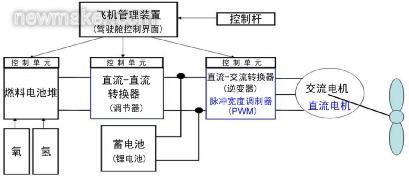
Fuel cell electric power system block diagram
The battery (lithium battery) is optional and constitutes a fuel cell + lithium battery combination, which is used to make up for the shortage of fuel cell power, provide additional electric power during the take-off and climb phases, and is also used as a backup power source to ensure the safety of the aircraft.
3.3 Advantages of electrodynamic (pure) propulsion system
The electric energy propulsion system and the conventional hydrocarbon fuel-internal combustion engine power system have different energy storage and energy conversion processes. As shown, the chemical energy stored in the hydrocarbon fuel in the hydrocarbon fuel-internal combustion engine power system converts chemical energy into mechanical energy through the combustion process of the internal combustion engine.
The hydrogen fuel cell system stores the hydrogen fuel (which can be obtained from hydrocarbon fuel reforming) through the electrochemical reaction of the fuel cell to convert chemical energy into electrical energy; the solid oxide fuel cell system is similar, but can directly use hydrocarbon fuel. The battery system converts the chemical energy stored in the electrolyte into electrical energy by an electrochemical reaction. Solar systems directly convert solar energy into electrical energy through solar cells. The various electric power propulsion systems described above ultimately convert electrical energy into mechanical energy by a motor.

Conventional internal combustion engine power system and electric propulsion system energy
Storage and energy conversion diagram (solar-electric power system uses solar cells to directly convert solar energy into electrical energy, not shown here)

Compared with the internal combustion engine power, the outstanding advantages of the electric power system are extremely efficient, environmentally friendly, and the system structure is simple.
The efficiency of a commonly used piston aeroengine is only about 30%, and the efficiency of the components of the electric power system is very high, wherein the fuel cell is about 50-60%, the battery is about 80%, and the motor is about 90% or more. Solar cells can convert about 20% of solar energy into electrical energy, and unused solar energy is not wasted, so its energy utilization rate is also high.
Solar cells, lithium batteries, hydrogen fuel cells, and motors operate with little or no pollution, solid oxide fuel cells produce very little pollutants, and the level of noise and vibration in electric power systems is extremely low.
The main components of the electric propulsion system are simple in structure, especially the motor is much simpler than the piston engine. Cables are mainly used between the components, and the layout is flexible, which brings many advantages in design.
In addition to the above advantages, the electric power propulsion system has many problems and deficiencies. There are still many challenging problems to be solved in order to achieve use.
3.4 Problems and deficiencies in electric propulsion systems
The main problems of the electric propulsion system are the low specific energy/energy density of the lithium battery and the fuel cell and the low performance of the motor.
The specific energy values ​​of lithium batteries, fuel cells and hydrocarbon fuels (gasoline, diesel) are shown in the table below. The values ​​of the first two are only a few tenths of the latter. Because of this, the weight of the electric propulsion system is much higher than that of the piston power system, and the result is only sacrificing aircraft performance.

Hydrocarbon fuel is the most energy-intensive fuel except liquid hydrogen. Even if only 30% of the energy is used (the average efficiency of the internal combustion engine), it is still as high as 3.6~3.7kWh/kg, which is equivalent to nearly 20 times of lithium battery and fuel. Nearly 10 times the battery. Lithium battery electric power system (including lithium battery and controller/charger, motor and controller system, etc.), fuel cell electric power system (fuel cell stack/heap and controller, motor and controller system, hydrogen fuel storage) The specific energy/specific power of the tank system and hydrogen fuel), the piston engine power system (engine system, fuel system, etc.) are comprehensively converted. The former two are also a fraction of the latter, and the weight of the electric power system is equivalent. Power (total energy) several times the piston engine power system.
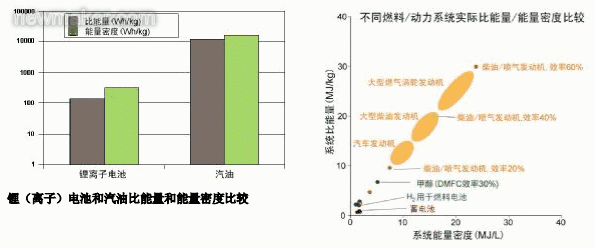
Hydrogen fuel cells require specialized hydrogen fuel storage systems, and the use of hydrocarbon fuels for hydrogen production also requires complex reforming systems. The hydrogen density is low and flammable, the use safety is poor, the storage space is large, and the sealing and anti-burning requirements are high. Hydrogen storage systems and reforming systems are also technical difficulties for hydrogen fuel cell propulsion systems. In order to save weight and space, it is necessary to increase the storage density of hydrogen fuel under the conditions of ensuring safety and usability.
There are various problems in the preparation and use of hydrogen fuel: the production process of hydrogen, especially liquid hydrogen, is very high, and it takes a lot of electric energy. The extraction process produces hydrogen to produce a large amount of carbon dioxide. Hydrogen fuel supply and transportation are difficult and the cost is very high. high.

Comparison of various fuel density / mass density
Lithium batteries and fuel cells also have problems such as low technology maturity, low comprehensive performance, and high cost, which all restrict the bottleneck of their development. These problems are in the process of being solved and are making promising progress.

3.5 Electric Power - Internal Combustion Engine Hybrid System
In view of the above problems with pure electric propulsion systems and meeting the power requirements of larger general-purpose aircraft/helicopters, some companies/research institutes are embarking on the development of electric-combustion engine hybrid systems (similar to the automotive industry). The high specific energy characteristics of the fuel-internal combustion engine system can fully meet the requirements of the aircraft, and after a hundred years of use and development, it is very mature and reliable, and can make up for the shortcomings of the pure electric power system. Although the hybrid system has certain advantages, it has generated many problems such as complexity and needs to be solved in depth, so the hybrid system is still in the exploration stage.
There are two technical solutions for hybrid systems.
One is a parallel motor on the basis of a piston engine-propeller system. The motor is connected to the piston engine power output shaft (drive propeller) through a mechanical transmission device, and both work at the same time in the takeoff and climb phase in which the aircraft requires a large power or the piston engine is separately operated. Work, when the aircraft is transferred to level flight, when the power is small, the motor works alone to drive the propeller through the mechanical transmission. The motor is powered by a lithium-ion battery system. Flight Design is developing this hybrid system to connect motors on the Rotax 914 piston engine. The hybrid system has a power range of 160~200hp (120~150kW) and is mainly suitable for four-seat single-engine aircraft. A proof-of-concept machine has undergone extensive testing including failure mode simulation.
Another hybrid system solution is based on the lithium battery-motor electric propulsion system, and an additional auxiliary piston engine power generation system. A generator is installed on the piston engine, and the piston engine is driven to generate electricity, and the generated electric energy is supplied to the motor. The piston engine-motor power generation system provides auxiliary power to meet the large electrical power requirements of the aircraft under specific operating conditions.
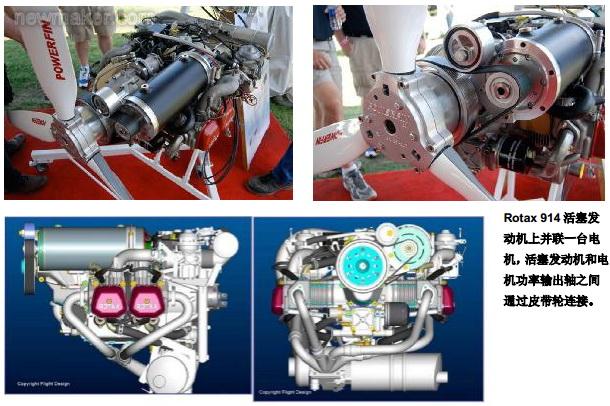
Gasoline Piston Engine - Motor - Lithium Battery Hybrid System (Flight Design)

(helicopter) diesel engine-generator-lithium battery-motor hybrid system
The problem with hybrid power is that the two systems are complex in structure, heavy in weight, difficult to match, difficult to handle and maintain, but are almost the only option when pure electric power system technology cannot meet the high power requirements of the aircraft.
summary
Despite the many problems in the development of electric propulsion systems and hybrid systems, it has been said that in the past decade, considerable progress has been made to meet the minimum requirements for aircraft use. With the advancement of science and technology, with the unremitting efforts of technical experts and scientists from various countries, some key technical problems are expected to break through, which will enable electric aircraft equipped with electric propulsion systems to fly farther, faster, higher and reach Practical.
4 Electric aircraft and its technical challenges and difficulties
Electric aircraft use electric propulsion systems instead of internal combustion engines to achieve many advantages and unique qualities. The most outstanding advantages are energy saving and environmental protection, high efficiency and low energy consumption. At the same time, it achieves near zero emissions, low noise and vibration levels, and good ride comfort. It is a truly environmentally friendly aircraft. In addition, it is also safe and reliable (no explosion and fuel leakage), simple structure, easy operation and operation, good maintainability / low cost, and good economy. There are also many advantages in design: the overall layout is flexible, the best layout and unconventional/innovative layout can be used; the aircraft with extraordinary performance can be designed to meet the needs of special applications.
Depending on the electric propulsion system, electric aircraft can be divided into solar electric aircraft (generally called solar aircraft), battery electric aircraft (currently mainly lithium battery electric aircraft) and fuel cell electric aircraft. In addition to pure electric aircraft, there are hybrid aircraft. Each type of aircraft is divided into manned and unmanned.
The technical challenges and difficult problems faced by various types of electric powered aircraft have commonalities and specialities.
4.1 Electric power propulsion system has low performance and excessive weight
The biggest technical challenge facing the development of various types of electric aircraft is that the key performance indicators of the electric power propulsion system are low, the technology is immature, and the weight is too large, which can only meet the minimum use requirements of electric aircraft. At present, the specific energy/energy density of the electric propulsion system is almost one order of magnitude compared with the conventional power system of the hydrocarbon fuel-piston engine, and the weight is nearly ten times that of the latter under the condition of providing the same total energy. In addition, the practicality, safety and reliability of the electric propulsion system need to be improved.
Excessive weight of electric propulsion systems is the biggest problem in electric aircraft design. At current performance levels, in order to achieve an acceptable level of aircraft performance, the weight of the electric propulsion system is large, accounting for a high proportion of the total weight of the aircraft. The weight of each part of an electric aircraft (in the case of a manned solar-powered aircraft) is compared to a conventional aircraft such as a typical airliner (A320 and Boeing 737) and a fighter aircraft. As a result, the structure and propulsion system of conventional aircraft accounted for about 40% of the maximum takeoff weight of the whole aircraft, while the value of solar electric aircraft was as high as 85% (see figure). The value of lithium battery and fuel cell electric aircraft is about 70%. ~80%, hybrid aircraft is about 60%.

Comparison of the weight composition of solar aircraft with jetliners and military aircraft
The super-large power of the electric propulsion system reduces the commercial capacity and flight performance of the electric aircraft and restricts the development of the electric aircraft. At the same time, it puts extremely demanding requirements on the design of aircraft aerodynamics and other systems: aerodynamic design should achieve the least resistance/lowest power consumption and the highest efficiency, such as the layout of the approximate power glider, and the fine optimization design; other aircraft systems The weight should be minimized. At the same time, it makes great sacrifices in aircraft performance, such as reducing speed and greatly reducing commercial load, range and battery life. Innovative design methods and techniques are used to achieve acceptable performance.
For hydrogen fuel cell electric aircraft, there are also fuel cell and hydrogen fuel storage system layout and design issues. The fuel cell system has a low work-to-weight ratio, a complicated system, and a high operating environment. At the same time, the design problem of safe and reliable hydrogen fuel storage system is not easy to solve. At present, despite the success of some technical testing machines, there are still many aspects that need to be developed and perfected to drive hydrogen fuel cell electric aircraft. There is still a long way to go.
From the preliminary analysis mentioned above, the utility of electric aircraft to achieve utility and for general-purpose aircraft with higher seat/weight is dependent on the improvement of the performance of electric propulsion systems, especially the specific energy of lithium batteries and fuel cell systems. Or a breakthrough in battery technology.
For solar electric aircraft, in addition to the common problems of these electric aircraft, there are some special problems.
4.2 Technical Challenges for Solar Electric Aircraft
The main technical challenges in the design of solar electric aircraft challenge the aeroelasticity of large-size wings, continuous day and night flight.
The low solar radiation intensity and the low energy utilization of solar cells make the total energy available to solar airplanes very limited. At noon in the low latitudes of the Earth's surface, the maximum solar radiation intensity is close to 1000W / m2, and the average between the daytime is only about 260 W / m2, and the solar and solar incident angles, weather conditions, location latitude and altitude are very high. Big relationship. The energy conversion and transmission loss rate of each component of the solar electric propulsion system is high, the energy utilization efficiency of the solar cell is only about 20%, and the obtained solar energy is proportional to its area. Other components of the system, such as maximum power point trackers (MPPT), batteries, propellers, motors, etc., also have varying degrees of energy loss. The solar electric propulsion system from the solar input to the final kinetic energy output of the propeller, the total energy utilization is only about 10%.
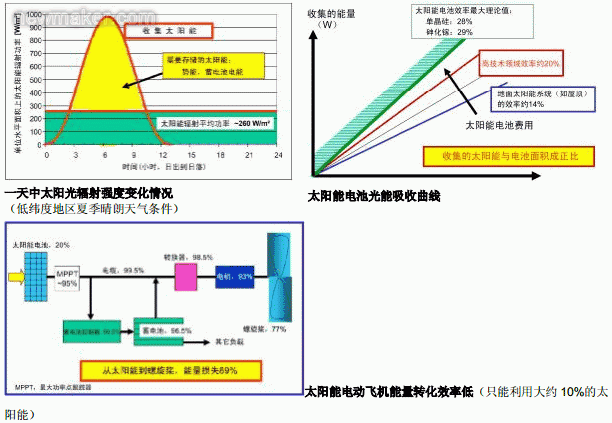
In order to obtain high electric power, solar cell electric aircraft requires a large-area solar cell array, and correspondingly adopts a large-area large-wing design. Many models adopt a flying wing and a quasi-flying wing layout. The solar array/wing area is generally tens to hundreds of square meters. The wingspan and wing area of ​​the "Sunshine Power" aircraft under development are even comparable to those of the A340 large passenger aircraft, and the weight and passenger capacity of the two are different. Hundreds of times. In order to achieve good low-speed (low Reynolds number) aerodynamic performance, the wing has a large aspect ratio design with an aspect ratio of around 20.
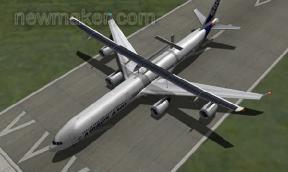
Comparison of the dimensions of the "Sunshine Power" solar aircraft and the A340 large passenger aircraft
Large aspect ratios and large-area wings can cause serious aeroelastic problems. The wing structure design has high enough strength and rigidity, and the lightest weight, but also meet the various contradictory requirements of the overall layout of the aircraft, equipment loading and so on. High-performance carbon fiber composite structures are generally used for complex multidisciplinary optimization design.
From the point of view of the use performance, solar electric aircraft can achieve high energy due to the limited energy, relying on limited energy to achieve day and night continuous aircraft, the technical difficulty is very high, it is even more difficult for manned solar electric aircraft.
4.3 Security / Airworthiness and cost price issues
Current airworthiness regulations/standards are not applicable to electric and electric power systems and require airworthiness authorities to develop new and revised regulations and standards. This requires a time process that requires airworthiness authorities to work with manufacturers of electric aircraft and electric power systems.
The cost of key components of electric power propulsion systems such as lithium batteries, fuel cells and solar cells is high, and the development costs of electric power propulsion systems and electric aircraft are also high, and economic factors constrain its development.
Weather and environmental adaptability are also a major technical issue. At present, electric aircraft can only basically fly in good weather conditions, but they cannot fly under severe weather conditions such as precipitation, snowfall, lightning, and harsh environmental conditions. To meet practical requirements, these problems must be solved. There are technical difficulties.
In addition, electric aircraft and electric propulsion systems have not been verified for a long time, and various new problems may occur during use.
5 Electric aircraft development status and technical progress
The electric aircraft is basically still in the exploratory development stage, mainly for technical verification and testing. Only a few of the more mature lithium battery electric aircraft have entered the commercial product trial and trial stage. In addition, fuel cell electric aircraft are also expected to enter the product development phase. Among all kinds of electric aircraft, except for solar electric aircraft, the development focus is on manned general-purpose aircraft.
In the way of development of electric aircraft, the electric propulsion system is mainly modified on the basis of conventional piston powered aircraft. The solar battery electric aircraft adopts a new design method due to technical speciality, and a few lithium battery electric aircraft projects are newly developed.
Because pure electric power propulsion system has lower energy, lower total energy (electric quantity) and limited output power, it is only suitable for low-end simple general-purpose aircraft/aircraft with low energy consumption of 2 or less. The main types are powered parachute and power. Gliders, powered delta wings, ultralight aircraft, (2 seats) light sport aircraft. Limited by the technical performance of the electric propulsion system, the voyage and endurance time of the electric utility aircraft is only a fraction of that of the conventional power aircraft, and the speed is also much lower.
Hybrid propulsion system can make up for the shortage of pure electric power system, provide high output power and total energy, and can meet four single-engine general-purpose aircraft and light helicopters. At present, hybrid systems and hybrid systems are still in the research stage.
5.1 Solar electric aircraft
A solar-powered aircraft converts solar energy into electrical energy through a solar cell mounted on the airfoil (and the fuselage). The electrical energy is delivered to the motor, which drives the propeller to propel the aircraft. Since solar energy is only available during the day, the aircraft can only fly between days.
In order to achieve continuous flight of the aircraft day and night, it is necessary to install an electrical energy storage device, and a lithium ion battery is often used. During the daytime flight, the surplus power of the solar array is stored in a lithium-ion battery, which is powered by the motor during nighttime flight. Due to the limited power stored in lithium-ion batteries, there are some ways in which aircraft can convert electrical energy into potential energy. When the solar cell power is surplus during the day, the surplus electric energy pushes the aircraft to climb to a certain height. When flying at night, the flight height is gradually reduced, and the potential energy is converted into kinetic energy to keep the aircraft in the air.

In the past decade, unmanned and manned solar-powered aircraft have broken through the system of day and night continuous aircraft, constantly creating new life time and flight height records. High strength (moderate stiffness), high toughness (large deflection), ultra-light composite structural design and manufacturing technology that meet the requirements of aeroelasticity are becoming more mature.
The large size of the manned solar electric aircraft and the use of weather-restricted characteristics determine that the current state of the art solar electric aircraft is still difficult to use and mass. The development direction of solar electric aircraft in the future is mainly drones with extraordinary flight characteristics and special purposes.
5.2 Lithium battery electric aircraft, fuel cell electric aircraft and hybrid aircraft lithium battery electric aircraft, fuel cell electric aircraft and hybrid aircraft are mainly used in the general aviation field, used as a popular private aircraft (manned driving).
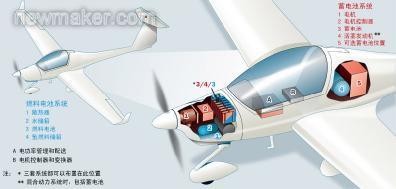
Schematic diagram of battery (lithium battery) and fuel cell electric aircraft layout
Lithium battery electric aircraft system has the lowest complexity and the most mature technology. Some near-utility models are about to be completed, and will be the mainstream models of electric general-purpose aircraft in the future. At present, lithium-electric aircraft is undergoing a transition from the technical verification research phase to the commercial aircraft development phase. From the simplest single-seat paramotor/powered delta wing, powered glider/ultra-light development, the two aircrafts have improved flight performance and usability, and the battery life has increased from ten minutes to two hours. Above, the voyage is correspondingly increased, and the use speed is also improved, which basically satisfies the general use requirements of the user's entertainment flight. Although there is still a certain distance compared with the conventional power aircraft, if it is at the current development speed, it is expected to reach the shoulder in the next ten years.

The fuel cell and hydrogen fuel storage technologies of fuel cell electric aircraft are relatively complex and are still in the experimental research stage. The performance of the testing machine is also steadily increasing, and the record of endurance time and flight speed has been continuously broken, and the loading capacity has also improved.
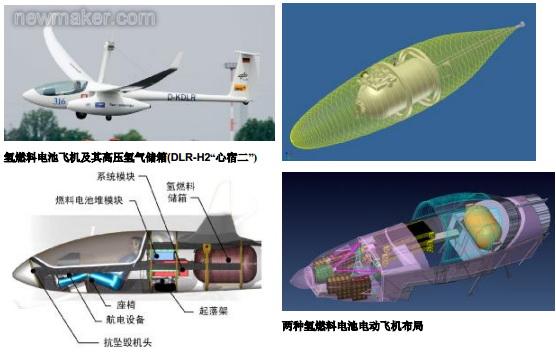
At present, the hybrid power system is still in the technical research stage, and the technical verification aircraft has not yet been developed. Currently known hybrid aircraft technology research/verification projects are: Flight Design and Cessna E172 two four-seat single-piston aircraft projects and EADS helicopters.
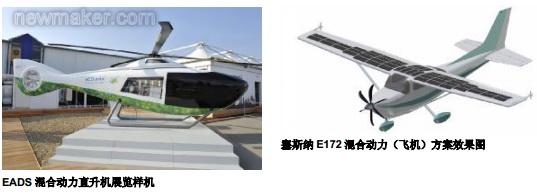
Summary and outlook
The current development of electric aircraft is in the ascendant, and technological research and model development have made significant progress. With the challenge of solving difficult technical problems, electric aircraft is expected to become practical and widely popular in the near future, creating an era of electric power aviation.
Electric power is one of the future development directions of aircraft, and the future of electric aircraft is worth looking forward to. China should strengthen relevant technical research and vigorously develop electric aircraft products. Therefore, the author suggests that China's aviation industry strengthen relevant technology research and carry out technical research and model development as soon as possible.

Concerned about surprises
Tags: electric aircraft, electric power, propulsion system, solar array, aeroelastic
Previous: Handbag hardware buckle knowledge Daquan Next: Plasma processing technology in several directions and related science workers
Diamond Tool,Abrasive,Diamond Blade
Fenghua Jade Motor Co., Ltd. , http://www.nscuttingdisc.com